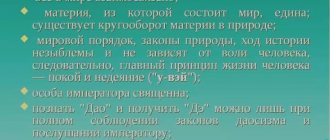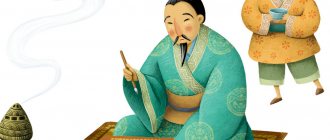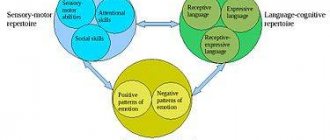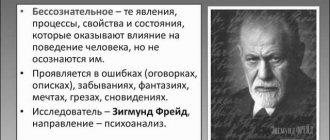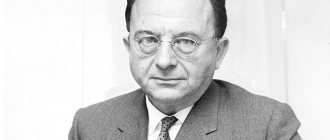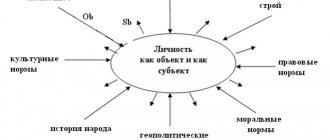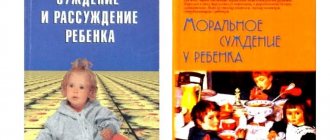Genetic psychology is a branch of psychological science founded by Jean Piaget. He viewed the formation of personality and its cognitive component as a continuous process of development. According to Piaget, a child's intelligence is formed on the basis of innate characteristics and is supplemented by those that arise during interaction with the outside world.
Genetic psychology - what is it?
The term “genetic psychology” does not quite accurately reflect the main interest of scientists who work in this field. The modern concept of “genetic” is more related to the human genome in the biological sense.
Piaget, in the field that he developed, considered genetics as one of the aspects of individual development. Therefore, science is engaged in the study of processes occurring within the framework of ontogenesis - the formation of intelligence, its origin, mechanisms of complication.
For Piaget, the priority was to study the process of developing knowledge and improving its quality. The scientist was interested in where knowledge comes from and how it is perceived, how it influences the world around us and a person’s personality. I studied how much knowledge is objective or subjective. Piaget's focus was on issues of epistemology.
The term “epistemology” denotes a discipline that examines scientific knowledge in detail - its structure, functions, development. Piaget perceived himself as an epistemologist. He became the founder of the International Center for Genetic Epistemology (in Geneva) and headed it.
Genetic psychology has become the basis for the further development of epistemology, but it is not easy to understand where the border between these two disciplines lies.
In scientific sources published in English, the term genetic epistemology (or developmental theory of knowledge) means exactly the same thing as what we mean by genetic psychology. The same term in English-language sources is used when talking about science that studies the influence of genes on the formation of the psyche and personality, studying the connection between genetics and individual behavior (using the twin method or through adopted children).
Key Ideas
Jean Piaget's genetic psychology focuses on:
- personality development in childhood:
- peculiarities of the child’s logic;
- cognitive mechanisms;
- the influence of internal and external factors on them;
- the reasons and process of transition from one form of thinking to another;
- general and differences in the psyche of an adult and a child.
To identify them, within the framework of genetic psychology , Piaget used the method he created - a clinical conversation. It was the main tool for studying a child’s thinking and made it possible to study not external signs of development or its absence, but the processes that stimulate it.
Piaget put forward several ideas that were further developed in the works of other scientists. The main one is that in order to develop intelligence, the child’s psyche needs a dynamic balance, which is established as the structures of logic develop. They are not innate, but arise and improve gradually.
The central idea put forward by Piaget was the idea of transformation. It indicates that initially there is no clear permanent boundary separating the object and the subject. Knowledge is formed in the process of interaction of the subject with objects.
The idea of construction reflects Piaget's vision that knowledge is formed through certain structures of action. They arise gradually, but initially there are no structures either in objects or in the subject. Their absence should force the subject to master the ability to coordinate actions.
The main functions that help an individual interact with the outside world are organization and adaptation. They are unchangeable, determined by heredity, and do not depend in any way on experience and content. The structures of the psyche are determined by acquired experience; they are formed throughout life. This difference in functions and structures makes it possible for the psyche to undergo qualitative changes and smoothly move from one stage of development to the next.
lek 91 Genetic epistemology by Piaget
J. Piaget's theory of intelligence development. Genetic epistemology.
Jean Piaget (1896-1980)
The key theoretical idea of J. Piaget is to give human knowledge the status of a biological organ of the psyche; the acquisition of knowledge is seen as an evolutionary process in the sense that it is a means of achieving adaptation. The relationship between the individual and the environment (between the knower and knowledge) is explored. Just as vital organs (liver or heart) provide adaptive balance between the body and the environment, the processes of acquiring knowledge can be considered as one of the sources of balance, since the knower only gradually approaches more adequate descriptions, explanations and predictions of events in the surrounding reality.
Piaget drew a parallel between the way children acquire knowledge (in particular, scientific ideas) and the historical development of knowledge, but this does not mean that the sequence of stages in the acquisition of knowledge by children follows the history of scientific ideas.
Piaget borrowed biological terms from Baldwin to describe the processes of intelligence development. For example, the assimilation of information by brain structures is considered by analogy with the assimilation of food by the body. Equilibrium is achieved through accommodation, as the body adapts to the environment or assimilates its components. The concept of balance is based on the idea of achieving a natural balance between the individual and the world, analogous to the balance of forces that supports life in nature.
The most important initial principle of research for Piaget is to consider the child as a being who assimilates the world around him, selects and assimilates it according to his own mental structure. In cognition, from Piaget’s point of view, the determining role is played not by the object itself, which is chosen by the subject, but, first of all, by the dominant mental structures of the subject. Knowledge of the world depends decisively on them. The wealth of experience that a person can have depends on the quantity and quality of the intellectual structures at his disposal. Development itself is a change in the dominant mental structures.
The activity of the subject in the process of cognition is determined not only by the presence of dominant mental structures, but also by the fact that they are built on the basis of the action of the subject. According to Piaget, thought is a compressed form of action. Cognition at all genetic levels is a product of real actions performed by the subject with objects.
From the point of view of the Swiss psychologist Jean Piaget, the intellect, like any other living structure, does not simply react to stimuli: rather, it grows, changes and adapts to the world. Piaget and other cognitive psychologists, including Jerome Bruner and Heinz Werner, are called structuralists because they are interested in the structure of thought and how the mind processes information.
STRUCTURALISTS are supporters of the structuralist approach in psychology, whose goal is to study mental structures and ways of processing information internally. The founder of the structuralist approach is B. Wundt (1832-1920), the founder of the first laboratory of experimental psychology, the central task of which he considered to be the identification and description of the structures of “mental matter” or, more simply, the elements of consciousness.
Piaget's interest in intelligence was initially biological in nature and then became philosophical. His genetic epistemology combined biology with epistemology (the branch of philosophy that studies the origins of knowledge), thus reviving the biological model in psychology. In the research of Jean Piaget
and the Geneva psychological school he created showed the qualitative originality of children's thinking, a special child's logic, different from an adult's, and traced how a child's thinking gradually changes its character throughout childhood.
Piaget's research began with his work with Simon and Binet in their Paris laboratory, where the scientist was working on improving standardized versions of the intelligence scale they had created. The French government commissioned these two psychologists to create a standardized test to determine the intelligence level of schoolchildren. While analyzing children's test results, Piaget became interested in the patterns he discovered in incorrect answers. It seemed that these patterns provide an answer to the question of how thinking processes develop in children. He suggested that differences between children and adults are not limited to the amount of knowledge, but also include differences in the way of knowing. The thinking of children differs from the thinking of adults both quantitatively and qualitatively. It was from this moment that Piaget began to move away from the quantitative (testological) approach to the study of intelligence.
Interest in thinking processes.
Piaget and his colleagues felt that standardized questions often led to stereotypical and uninteresting answers. Therefore, Piaget proposed using a clinical or probing interview technique, when the child must answer questions or manipulate stimulus material. This approach is aimed at identifying the thinking processes used in answering the question rather than identifying the specific knowledge accumulated by the child. The results of these interviews led Piaget to the conclusion that logic models could be used to describe the development of integrated thinking processes in children.
Active Intelligence
. According to Piaget, the intellect is neither a blank slate on which knowledge can be written, nor a mirror reflecting the perceived world. If the information, perceptual images or subjective experiences a person receives correspond to the structure of his intellect, then this information, images and experiences are “understood” or, in Piaget’s language, assimilated. If the information does not correspond to the structure of the intellect, it rejects it (and in the case when its structure is ready for change, it adapts to the new information). In Piagetian terminology, assimilation is the interpretation of new experiences based on existing mental structures without changing them in any way. Accommodation, on the other hand, is the modification of existing mental structures in order to integrate old and new experiences.
Piaget proposed a biological model to describe the process by which people adapt to the world. When an animal eats, two processes occur simultaneously. The body adapts (accommodates) to food through changes in the digestive system, which produces enzymes and begins the necessary muscle activity. Along with this, assimilation (assimilation) of food occurs, which becomes part of the animal itself. According to Piaget, people develop and improve their intelligence in a similar way.
Piaget used the term schema to refer to mental structures.
Schemas are ways of processing information that change as a person grows and gains more knowledge. There are two types of schemas: sensorimotor schemas, or actions, and cognitive schemas, which are more like concepts. We rearrange our circuits to adapt (accommodate) to new information and at the same time integrate (assimilate) new knowledge into old circuits. When we see a new object for the first time, we try to make it fit
ASSIMILATION. In Piaget's theory, it is the process of incorporating new information as an integral part into an individual's existing schemas.
ACCOMMODATION. Piaget's term for the act of changing our thought processes when a new object or idea does not fit into our concepts.
SCHEME. Piagetian term for the mental structure that processes knowledge, perceptual imagery, and subjective experience; As individuals mature, their schemas change.
some category already known to us. Maybe this is a weapon? Toiletries? Kitchenware? If this object cannot be subsumed under our existing concepts (in other words, if we cannot assimilate it), then we have to change our concepts or form a new one (that is, resort to accommodation).
The intellect always strives to establish a balance between assimilation and accommodation, to eliminate inconsistencies or discrepancies between reality and its representation created in the mind. This process, called balancing, underlies human and, in fact, all biological adaptation. For Piaget, the development of intelligence is simply an important example of biological adaptation. He believed that these invariant functions of adaptation, that is, assimilation and accommodation, form the basis of human intellectual adaptation to the external environment and allow man to survive as a species.
BALANCE. Piaget's term for the basic process of human adaptation. In equilibration, individuals strive to achieve equilibrium or correspondence between the external environment and their own thought structures.
| Stage | Age | Characteristic behavior |
| Sensorimotor | From birth to 1.5-2 years | Babies learn about the world only through various actions: looking, grasping, sucking, biting, chewing, etc. |
| 1. Reflex exercise | 0-1 month | |
| 2. Elementary skills, primary circular reactions | 1-4 months | |
| 3. Secondary circular reactions | 4-8 months | |
| 4. The beginning of practical intelligence | 8-12 months | |
| 5. Tertiary circular reactions | 12-18 months | |
| 6. Beginning of internalization of schemes | 18-24 months | |
| Preoperative | From 2 to 8 years 2-4 years (emergence of symbolic function, beginning of internalization of action patterns) 4-6 years (intuitive thinking based on perception) 6-8 years (intuitive thinking based on more detailed ideas) | Young children form concepts and use symbols, such as language, to communicate them to others. These concepts are limited to their personal (egocentric), direct experience. At the preoperational stage, children have very limited, sometimes magical, ideas about cause and effect and experience significant difficulty in classifying objects or events. Piagetian phenomena: misunderstanding of the conservation law, animism, egocentrism, |
| Specific operations | From 8 to 11-12 years 8-10 years (simple operations: classification, seriation, establishment of symmetry) 10-12 years (coordinate system, projective concepts) | Children begin to think logically, classify objects according to several criteria and operate with mathematical concepts (provided that all these operations are applied to specific objects or events). At the concrete operations stage, children achieve an understanding of conservation. |
| Formal transactions | From age 12 or a little later | Teenagers are able to analyze solutions to logical problems of both concrete and abstract content: they can systematically think through all the possibilities, make plans for the future or remember the past, and reason by analogy and metaphorically. |
Stages of intelligence development.
Stages are steps or levels of development that successively replace each other. At each level a relatively stable equilibrium is reached, which is then disturbed again. The process of development of intelligence represents a succession of three large periods, during which the formation of three main intellectual structures occurs (see the simplified diagram given in the table). First, sensorimotor structures are formed - systems of sequentially performed material actions. Then structures of specific operations arise - systems of actions performed in the mind, but based on external, visual data. Even later, the formation of formal logical operations occurs.
Formal logic, according to J. Piaget, is the highest level in the development of intelligence. The intellectual development of a child represents a transition from lower to higher stages. But at the same time, each previous stage prepares the next one and is rebuilt at a higher level.
The sensorimotor period covers the first two years of a child's life. At this time, speech is not developed and there are no ideas, and behavior is based on the coordination of perception and movement (hence the name “sensorimotor”).
Once born, the child has innate reflexes. Some of them, such as the sucking reflex, can change. After some exercise, the child sucks better than on the first day, then begins to suck not only during meals, but also in between - his fingers, any objects that touch his mouth. reflex exercise stage
.
As a result of reflex exercises, the first skills
.
At the second stage, the child turns his head towards the noise, follows the movement of the object with his eyes, and tries to grab the toy. The skill is based on primary circular reactions
—repeated actions. The child repeats the same action over and over again (say, pulling a cord) for the sake of the process itself. Such actions are reinforced by the child’s own activity, which gives him pleasure.
Secondary circular reactions
appear at the third stage, when the child is no longer focused on his own activity, but on the changes caused by his actions. The action is repeated in order to prolong the interesting experience. The child shakes the rattle for a long time to prolong the sound that interests him, runs all the objects in his hands along the bars of the crib, etc.
The fourth stage is the beginning of practical intelligence
. The action patterns formed at the previous stage are combined into a single whole and used to achieve the goal. When a random change in an action produces an unexpected effect—a new impression—the child repeats it and reinforces the new pattern of action.
, tertiary circular reactions appear
: the child is already deliberately changing actions to see what results this will lead to. He actively experiments.
, the internalization of action patterns begins
. If previously the child performed various external actions in order to achieve the goal, tried and made mistakes, now he can already combine patterns of actions in his mind and suddenly come to the right decision. For example, a girl, holding objects in both hands, cannot open the door and, reaching for the door handle, stops. She puts the objects on the floor, but, noticing that the opening door will hit them, she moves them to another place.
It takes about 2 years for an internal action plan to be formed. This ends the sensorimotor period, and the child enters a new period - representative intelligence and concrete operations. Representational Intelligence
- thinking with the help of ideas.
A strong figurative beginning with insufficient development of verbal thinking leads to a kind of childish logic. At the stage of pre-operational ideas,
the child is not capable of evidence or reasoning. A striking example of this is the so-called Piagetian phenomena.
Preschoolers were shown two clay balls and, making sure that the children considered them the same, before their eyes they changed the shape of one ball - they rolled it into a “sausage”. Answering the question whether the amount of clay in the ball and the sausage was the same, the children said that it was not the same: there was more in the sausage because it was longer. In a similar task involving the amount of liquid, children judged the water poured into two glasses to be the same. But when they poured water from one glass into another, narrower and taller one, and the water level in this vessel rose, they believed that there was more water in it because they “poured it.” The child does not have the principle of conservation of the amount of substance. He, without reasoning, focuses on the external, “conspicuous” signs of objects.
The child does not see things in their internal relationships, he considers them as they are given by direct perception. He thinks that the wind blows because the trees sway, and the sun follows him all the time, stopping when he stops. J. Piaget called this phenomenon realism
. The preschooler slowly, gradually moves from realism to objectivity, to taking into account other points of view and understanding the relativity of assessments. The latter is expressed, for example, in the fact that a child, who considers all big things to be heavy and small things to be light, acquires a new idea: a small pebble, light for a child, turns out to be heavy for water and therefore sinks.
A child who has pre-operational ideas is also characterized by insensitivity to contradictions, a lack of connection between judgments, a transition from particular to particular, bypassing the general tendency to connect everything with everything, etc. This specificity of children’s logic, as well as realism, is determined by the main feature of the child’s thinking - his egocentrism
. Egocentrism is a special intellectual position of a child. He views the whole world from his own point of view, the only and absolute one; he does not have access to the understanding of the relativity of knowledge of the world and the coordination of different points of view. The child’s egocentric position is clearly visible in the experiment with a mountain model. The three mountains looked different from different sides of the layout. The child saw this mountain landscape from one side and from several photographs could choose the one that corresponded to his real point of view. But when he was asked to find a photo with a view of the doll sitting opposite him, he again chose “his” photo. He couldn't imagine that the doll had a different position and saw the layout differently.
The example given applies to preschoolers. But egocentrism is a general characteristic of children's thinking, manifesting itself in every period of development. Egocentrism intensifies when, during development, the child encounters a new area of cognition, and weakens as he gradually masters it. The ebb and flow of egocentrism corresponds to the sequence in which balance is disturbed and restored.
The stage of pre-operational ideas ends with the emergence of an understanding of the conservation of the amount of matter, the fact that during transformations some properties of objects remain unchanged, while others change. Piaget's phenomena disappear, and 7-8 year old children, solving Piaget's problems, give the correct answers. Specific Operations Stage
associated with the ability to reason, prove, and correlate different points of view. Logical operations, however, need to be supported by clarity and cannot be performed hypothetically (that’s why they are called concrete). The system of operations that develops in a child around the age of 11 prepares the ground for the formation of scientific concepts.
The last, highest period of intellectual development: - the period of formal operations
. The teenager is freed from specific attachment to objects given in the field of perception, and acquires the ability to think in the same way as an adult. He considers judgments: as hypotheses from which all sorts of consequences can be drawn:; his thinking becomes: hypothetico-deductive.
Egocentrism of children's thinking
. Jean Piaget lived a long, fruitful life in science—he worked intensively for 60 years. Naturally, his psychological views changed during this time, and a theory developed: At the beginning of his scientific activity, in the 20s, J. Piaget considered the development of a child’s intelligence as a change in the stages of autism, egocentrism and socialization. L. S. Vygotsky gave a detailed analysis of this scheme and the very concept of egocentrism.
Autistic
thought is subconscious, it does not adapt the child to the external reality around him, but creates an imaginary reality itself: this is mirage thinking, daydreaming.
Autistic: thought strives: not to establish the truth, but to satisfy desires:; appears in images, not in speech; individual, it is difficult to convey to others. Socialized
, directed: thought, on the contrary, is conscious, pursues clear goals, adapts the child to reality, is expressed in speech and contains truth or error.
Egocentric
thought is the main one: of the intermediate forms between the logic of autism and the logic of reason. Therefore, it has features of autism, in particular, a focus on satisfying the child’s desires. The roots of egocentrism are in the child’s asociality, which lasts until the age of 7-8, in the selfish nature of his practical activities.
J. Piaget judges a child’s egocentric thinking by his egocentric speech. This speech has no communication function. When two small children discuss something, each of them talks about himself and himself, mainly because he cannot take the point of view of his interlocutor. The result is not a dialogue, but a “collective monologue.” In general, egocentric speech is monologue. The child, without addressing anyone, speaks to himself as if he were thinking out loud. Egocentric: speech accompanies the child’s activities and experiences; it is, as it were, a by-product of the child’s activity: if it did not exist, nothing would change in the child’s actions. It gradually disappears and dies off at the threshold of school age.
L.S. Vygotsky, having become interested in the facts of child development identified by J. Piaget, explains them differently. But first of all, he conducts a study of egocentric speech. In his experiment, the child encounters a difficulty in his activity, for example, when drawing, at some point he does not find the required colored pencil. When difficulties arise, egocentric statements increase twice as much. What is the child talking about? “Where is the pencil? - the preschooler asks himself. — Now I need a blue pencil. It’s okay, I: instead, I’ll paint it in red and moisten it with water, it will darken and look like blue.” From this example alone it is clear that in egocentric speech the child tries to comprehend the situation, pose a problem, outline a way out of the difficulty:, plan the next actions:. In the same situation, the schoolboy did not say anything out loud, he peered: and thought about the situation; at the stage of difficulty: his inner speech turned on.
According to L.S. Vygotsky, egocentric speech has two functions: on the one hand, it accompanies children’s activity, on the other, it serves as a means of thinking, forming a plan for solving a problem. When egocentric speech dies off at the border between preschool and school age, it does not disappear completely, but turns into inner speech. Egocentric: speech is thus not necessarily: an expression of egocentric thinking. Performing the functions of planning actions, it comes closer to the logic of realistic, socialized thinking, and not the logic of dreams and dreams. As for autistic, “mirage” thinking, it cannot be the primary stage on which all the others are built. Thinking as a new: mental: function appears: for better adaptation to reality, and not for self-satisfaction. Autistic thinking is a late development, fertile ground for the exercise of sufficiently developed thinking abilities. Daydreaming and play of imagination appear only in preschool age.
According to J. Piaget, the development of children's thinking: goes from autism through egocentric speech and thinking - to socialized speech and logical thinking. According to L.S. Vygotsky, from the child’s initially social speech, development proceeds through egocentric speech to internal speech and thinking (including autistic thinking).
Piaget's phenomena
. Preschool children have no idea about the conservation of the amount of a substance. It appears spontaneously after 7-8 years. In this regard, the question arises: is it possible to form this idea in preschoolers, i.e. “remove” Piagetian phenomena from them? Can children at this age stage think logically and under what circumstances?
J. Bruner changed the course of one of J. Piaget's experiments. The children were given a task involving glasses of water. First, they compared the amount of water in the two vessels and determined that it was “the same.” Then the vessels were covered with a screen and the children were asked whether the amount of water would change if it was poured from one glass into another, wider one. Most 4-5 year old children said that there would be the same amount of water left. At the third stage of the experiment, water was poured from one glass behind the screen and the screen was removed. Now the children saw that the water level in the new wide glass was lower than in the second one, and most children already believed that there was less liquid in it.
J. Bruner showed that, without having a visual picture, in a purely theoretical sense, preschoolers know that transfusion does not change the amount of water. But each property of a thing for a child is its characteristic as a whole, and the level of liquid that they see becomes an indicator of its Total quantity. Perception and visual representations often lead to the erroneous interpretation of changes in the visible signs of a thing as a change in its identity: one parameter changes, which means the whole thing changes.
The dominant features of children's thinking: realism, animism, artificialism.
Realism.
At a certain stage of development, the child views objects as their immediate perception gives (for example, the moon follows the child while walking). Realism can be intellectual - the wind is “made” by tree branches; the name of an object is as real as the object itself; the image of the object is “transparent” and includes everything that the child knows about the thing. Moral realism is manifested in the fact that the child does not take into account the internal intention of an action and judges it only by the visible final result (whoever breaks more cups is more to blame - despite the fact that one person tried to help and accidentally dropped the dishes, and the other got angry and broke the cup on purpose).
Animism
represents universal animation, endowing things (primarily independently moving, such as clouds, river, moon, car) with consciousness and life, feelings.
Artificialism
- understanding of natural phenomena by analogy with human activity, everything that exists is considered as created by man, by his will or for man (the sun - “so that there is light for us”, the river - “so that boats float”).
Among the list of other features of children's logic highlighted by Piaget:
- syncretism (global schematicism and subjectivity of children's ideas; the tendency to connect everything with everything; the perception of details, causes and consequences as adjacent),
— transduction (transition from particular to particular, bypassing the general),
- inability to synthesize and juxtapose (lack of connection between judgments),
Intelligence and principles of its development
Intellectual development is a continuation of the biologically determined process of adaptation. This is one of the forms of adaptation to changing life circumstances.
Changes in the external environment occur constantly. A person strives to establish and maintain balance in these circumstances. At the cognitive and behavioral levels, adaptation occurs through action patterns, as well as accommodation and assimilation:
- action schemes are formed in the individual as concepts or a set of algorithms used when interacting with the external environment or in the process of dividing into categories. For example, babies have a pattern of sucking, grasping (they are innate), they know how to push;
- Assimilation is a process in which an individual uses an existing schema in relation to a previously unknown object. This makes it possible to establish successful interactions. Thus, small children grab an unfamiliar object (pencil) with the same habitual movement as their mother’s finger;
- During the process of accommodation, the scheme changes or a new one is created. At some point, the baby begins to understand that it is not possible to grab the ball with the same movement as the mother’s finger. It changes the movement (creates a different pattern).
The continuous process of interaction with the world, maintaining contact with it and balance using the mechanisms of cognition is the essence of the process of child development, the formation of his thinking. The need to establish a balance between one's own needs, aspirations and the reality of the world around us is the driving force behind the development of intelligence.
The genetic method does not consider intelligence as an innate formation, but in human nature there is a desire to develop and improve intelligence. Thanks to this feature, a person can think and expand his knowledge base.
Activity and the need to interact with objects and people around us contribute to the development of intelligence. In the process of interaction, the individual’s knowledge expands, a system of concepts and action patterns is formed, and logical structures are improved.
Psychological research methods provide an understanding that an individual’s actions with external objects are a source of knowledge. In the case when actions are aimed at external objects, the individual activates internal processes, as a result of which schemes, concepts, and awarenesses are formed. Otherwise, the basic concepts are not a given. They arise as a result of the fact that a person transforms the experience gained from interacting with the outside world into internal structures.
Stages of intelligence development
Within the framework of genetic psychology, Jean Piaget considered several stages of the development of intelligence. By analogy with the name of each of these stages, the types of intelligence that develop in children as they grow up are also designated.
Features of the sensorimotor stage
Only a born child perceives himself as a single whole with his mother and the surrounding world. In the process of interacting with other people, with toys, he begins to understand that he is separate from them. He also comes to understand that his own actions can affect objects.
Touching a toy hanging above the crib, the baby sees it swinging. Waving a rattle, he hears a sound. This is how a small child gets acquainted with the world, and at the same time he develops action patterns and concepts. They are based on the mechanisms of accommodation and assimilation.
At the sensorimotor stage, the child learns the principle of constancy. It lies in the fact that an object exists even when it becomes inaccessible to the senses (disappears from sight or becomes inaudible).
The baby develops the ability to anticipate the place where an object that is moving but hidden from view should appear.
An important acquisition of the sensorimotor stage of development is the transition from reflex activity to behavior that is caused by curiosity and the desire to experiment.
The child actively explores the space around him, experiments with influencing external objects with different intensities. He needs this to expand the base of patterns, knowledge, and develop thinking.
At the final stage of the sensorimotor period, the child can cope with simple tasks, while he relies on the sensory information he already has. Gradually there is a transition from thinking of a concrete-sensual type to a symbolic one.
Features of the operational stage
This stage of development is characterized by the appearance of speech and imaginative thinking in the child. The baby can already pretend, imagine, use words behind which a certain meaning is hidden.
In the preoperative period, the ability to think logically, manipulate information and use it in the thinking process has not yet been formed. That is why this stage of development is called pre-conceptual.
Features of the operational stage
The child moves to the operational stage of development closer to the age of seven. The baby’s thinking is already developed enough to perform simple logical tasks. But it is still difficult for a child to use logic for mental actions - for this he needs physical interaction with an object. It is difficult for a child to understand an abstract situation or idea.
The operational stage lasts until the beginning of adolescence (12 years). Domestic psychologists who studied the development process combined the operational stage with the formal operational stage. But Jean Piaget considered another important period in the development of personality, its intellect.
Features of the stage of formal operations
During this period, the child develops the ability to think abstractly and actively use logic. The personality moves to the next, higher stage of development (according to Piaget, the highest).
The child is already able to think actively, comprehend information objectively, and uses his existing knowledge to create abstract ideas. An important acquisition of this stage is the ability to predict the result of a certain activity, set a goal (abstract) and act to achieve it.
Irina Sherbul
Types of knowledge
Piaget proposes three types of knowledge: physical, logical-mathematical and social.
Physical knowledge: This refers to knowledge relating to objects in the world that can be obtained through perceptual properties. In Piaget's theory, acquiring physical knowledge is equated with learning (Gruber and Voneche, 1995). In other words, thought directly corresponds to experience.
“Piaget also called his views constructivism because he firmly believed that the acquisition of knowledge is a process of continuous self-construction. That is, Knowledge is not somewhere outside, outside the child, waiting to be discovered. But it is not realized entirely within the child, ready to emerge as the child develops along with the world around her... Piaget believed that children actively approach their environment and acquire knowledge through their actions.”[3]
“Piaget identified three types of knowledge that children acquire: physical, logical-mathematical and social. Physical knowledge,
also called empirical knowledge, has to do with knowledge about objects in the world that can be gained through their perceptual properties...
Logical-mathematical knowledge
is abstract and must be invented, but through actions with objects that are fundamentally different from the actions that provide physical knowledge...
Social knowledge
is culture dependent and can only be learned from other people within one's cultural group." [
citation needed
]

